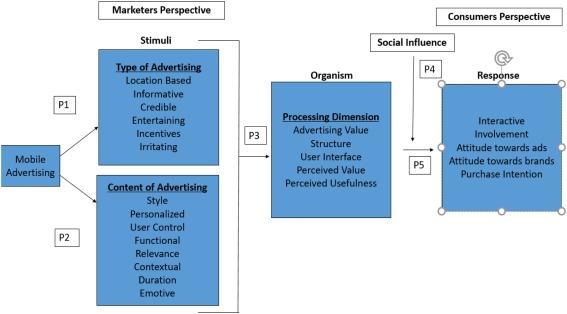Proven Inclusion strategies: Inspiring Case Studies of Success in Diverse organizations
Inclusive workplaces aren’t just a moral imperative—they’re drivers of innovation, productivity, and employee satisfaction. More than ever, leaders across industries are prioritizing inclusion strategies to foster diverse, high-performing teams. But what does accomplished inclusion really look like in practice? By exploring proven strategies and compelling case studies, we can uncover the actionable steps any organization can take to build a culture where everyone thrives.
Why Embrace Inclusion Strategies? The Benefits of Diversity & Inclusion
Diversity and inclusion (D&I) efforts offer significant advantages for organizations. some proven benefits of implementing effective inclusion strategies include:
- Increased Innovation: Diverse teams generate more creative solutions and identify new market opportunities.
- Improved Employee Engagement: inclusive environments boost morale and reduce turnover.
- Better Financial Performance: A McKinsey study found companies with higher diversity outperform those with less diverse teams.
- Enhanced Brand Reputation: Organizations known for their D&I efforts attract top talent and loyal customers.
Key Components of Proven Inclusion Strategies
To develop a truly inclusive workplace, organizations should focus on actionable inclusion strategies tailored to their unique needs. Some basic components include:
- Leadership Commitment: Visible buy-in from senior leaders is crucial for driving culture change.
- Equity in Recruitment & Promotion: Update hiring and promotion practices to eliminate bias and create equal opportunities.
- Employee Resource Groups (ERGs): Empower underrepresented voices to share perspectives and foster community.
- Continuous Training & Education: Offer regular workshops on unconscious bias, cultural competence, and allyship.
- Feedback & Accountability: Encourage honest feedback and establish metrics to track D&I progress.
Inspiring Case Studies: Diverse Organizations Leading the Way
Let’s dive into real-world case studies where innovative inclusion strategies lead to measurable success. These examples showcase organizations across industries that have set the standard for diversity and inclusion excellence.
Case Study 1: Accenture – Building a Culture of Belonging
Accenture, a global professional services leader, has made remarkable strides in promoting workplace inclusion:
- Transparent Diversity Goals: Public commitment to gender balance, including a target of 50% women and 50% men in the workforce by 2025.
- Intersectional ERGs: Facilitates more than 100 employee Resource Groups supporting women,LGBTQ+,veterans,and multicultural employees.
- Inclusive Leadership Training: All managers undergo training in inclusive leadership, covering topics such as allyship and psychological safety.
Results: Accenture’s ongoing efforts have resulted in a higher proportion of female and minority leaders, improved employee engagement scores, and industry recognition for D&I leadership.
Case Study 2: Microsoft – Empowering Accessibility & Neurodiversity
Microsoft implements practical inclusion strategies centered around accessibility and neurodiversity:
- Neurodiversity Hiring Program: Designed to recruit and support candidates with autism, ADHD, and other cognitive differences.
- Accessibility Features: Embedding accessible design into product progress to serve users of all abilities.
- Company-wide Training: Regular workshops on disability etiquette and inclusive dialog.
Results: Microsoft’s initiatives have broadened its talent pool, fostered a culture of respect and support, and improved the accessibility of its technologies for millions worldwide.
Case Study 3: SAP – Autism at Work program
SAP launched its groundbreaking “Autism at Work” program to tap into underutilized talent pools:
- Tailored interview Process: Replaces conventional interviews with skills-based assessments and on-the-job trials.
- Onboarding Support: Provides job coaches so new hires with autism thrive in their roles.
- Manager Education: equips supervisors to understand and support neurodivergent colleagues.
Results: Over 200 employees with autism have contributed to SAP’s innovation teams, creating business value and strengthening the company’s reputation as an inclusive workplace.
Case Study 4: johnson & johnson – Global D&I Councils
Johnson & Johnson has established global and local D&I councils to drive sustained impact:
- Regional Strategies: Each location develops tailored inclusion plans based on local needs.
- Mentorship for Underrepresented Employees: Focused support for women, LGBTQ+, and ethnic minorities in leadership pipelines.
- External Partnerships: Collaborations with universities and non-profits to support diverse STEM talent.
Results: J&J has seen above-industry averages in minority representation at senior levels, leading to richer innovation and a globally competitive workforce.
Practical Tips: How to Implement Inclusion Strategies in Your Organization
Inspired by these case studies? Hear are practical, actionable tips for integrating proven inclusion strategies in your workplace:
- Start with Leadership Buy-in: Ensure your executive team visibly supports and models inclusive values.
- Define Clear Metrics: Track progress with concrete data: representation rates,promotion rates,engagement survey scores,and retention of underrepresented groups.
- Empower ERGs: Support resource groups with budgets and influence—highlight their events and recommendations.
- Prioritize transparent Communication: Regularly share updates on D&I initiatives, successes, and areas for enhancement with all staff.
- Build Feedback Loops: Conduct anonymous surveys and listening sessions to understand employee experiences and identify barriers.
- promote Continuous Learning: Make D&I learning modules a routine part of training and performance reviews.
- Celebrate success: Recognize teams and individuals who drive inclusion, both internally and externally.
Firsthand Experiences: Insights from Inclusive Leaders
“Our Autism at work program hasn’t just benefited participants—it’s changed how every team member collaborates, communicates, and innovates.”
– Jose Velasco, VP of Product Management, SAP
“Inclusion must be intentional.It’s something you build into everyday business decisions—not a box you check once a year.”
– Julie Sweet,CEO,Accenture
conclusion: Inclusion as a Competitive Advantage
Diversity and inclusion aren’t merely HR buzzwords—they are foundational to organizational resilience and long-term success. By adopting proven inclusion strategies, committing to continuous learning, and drawing inspiration from organizations at the forefront, leaders can foster thriving, innovative, and equitable workplaces. The results aren’t just numbers on a page; they’re seen in stories of transformed teams,empowered individuals,and organizations that rise above the rest.
Ready to drive change? Start by embracing these inclusion strategies and let your organization become the next inspiring case study of D&I success.

